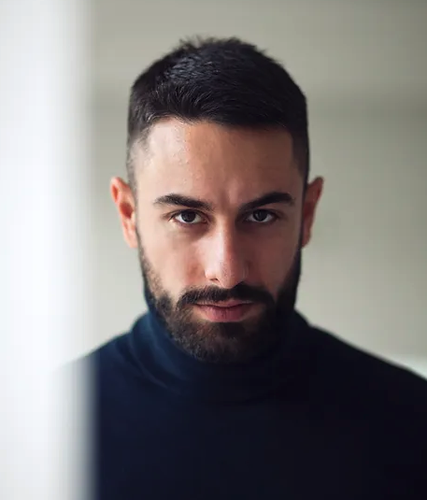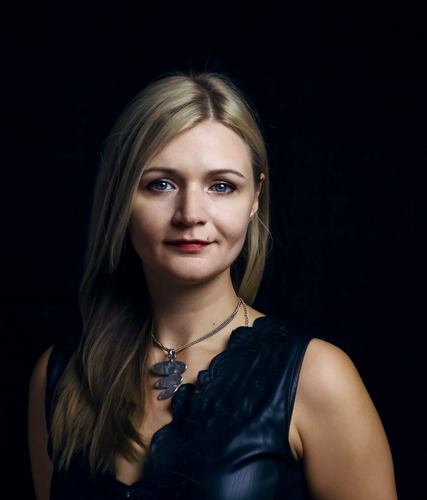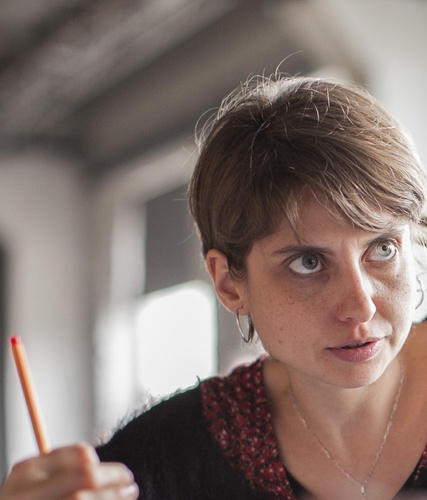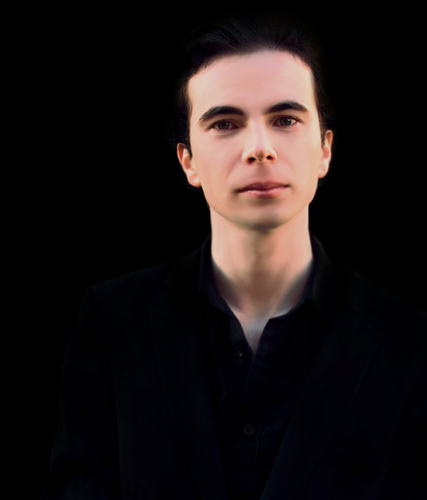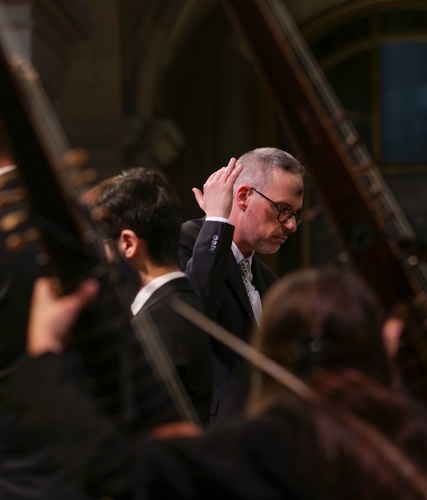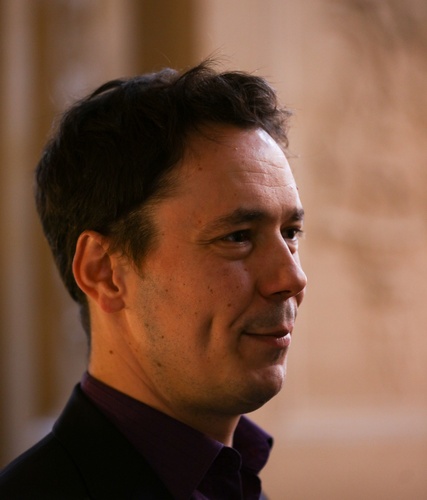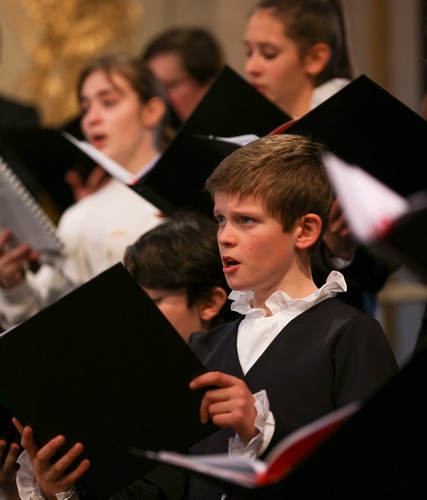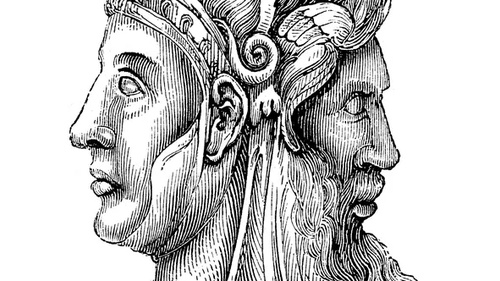 « Que serait la création musicale sans les siècles de musique qui la précèdent ? Que signifierait la conservation d’un répertoire, voire la restauration de ses pratiques d’interprétation si elles ne servent d’inspiration vers d’autres rivages ? Que sont nos lieux de représentation musicale s’ils n’offrent pas une part d’inattendu ? Janus, le Dieu romain aux deux visages, qui, du seuil de la maison, regarde le passé et le futur, donne son nom à ce programme commun – et hors norme – de l’Ircam et du CMBV qui invite deux jeunes compositrices et deux jeunes compositeurs européens à s’inspirer de la musique baroque française pour composer de nouvelles oeuvres. Une longue et belle aventure entre patrimoine et création, débutée au printemps dernier et qui nous entraînera jusque 2024. » Nicolas Bucher, directeur du CMBV, et Frank Madlener, directeur de l’Ircam
« Que serait la création musicale sans les siècles de musique qui la précèdent ? Que signifierait la conservation d’un répertoire, voire la restauration de ses pratiques d’interprétation si elles ne servent d’inspiration vers d’autres rivages ? Que sont nos lieux de représentation musicale s’ils n’offrent pas une part d’inattendu ? Janus, le Dieu romain aux deux visages, qui, du seuil de la maison, regarde le passé et le futur, donne son nom à ce programme commun – et hors norme – de l’Ircam et du CMBV qui invite deux jeunes compositrices et deux jeunes compositeurs européens à s’inspirer de la musique baroque française pour composer de nouvelles oeuvres. Une longue et belle aventure entre patrimoine et création, débutée au printemps dernier et qui nous entraînera jusque 2024. » Nicolas Bucher, directeur du CMBV, et Frank Madlener, directeur de l’Ircam
Janus : une rencontre au présent !
Le programme Janus, partenariat inédit et novateur entre le CMBV et l’Ircam, met en regard le répertoire baroque français et les créations de quatre jeunes compositrices et compositeurs européens.
Janus est le Dieu romain des commencements et des fins, des choix, du passage et des portes. C’est un Dieu bifrons à deux visages, l’un tourné vers le passé et l’autre vers le futur. À l'image de cette divinité, le CMBV, institution patrimoniale, s’associe pour plusieurs années à l’Ircam, centre de recherche et de création musicale lié au Centre Pompidou. Avec le soutien du Ministère de la Culture, les deux structures passent commande de quatre œuvres nouvelles à quatre jeunes compositrices et compositeurs européens choisis en commun par leurs directions générales et artistiques.
Ces commandes sont pensées en complémentarité avec une ou plusieurs œuvres françaises des XVIIe et XVIIIe siècles. Elles sont destinées à la Maîtrise du CMBV sous différentes formes (chœur complet, voix d’enfants, choeur adulte, ensemble de solistes), a capella ou avec un ensemble instrumental, avec électronique.
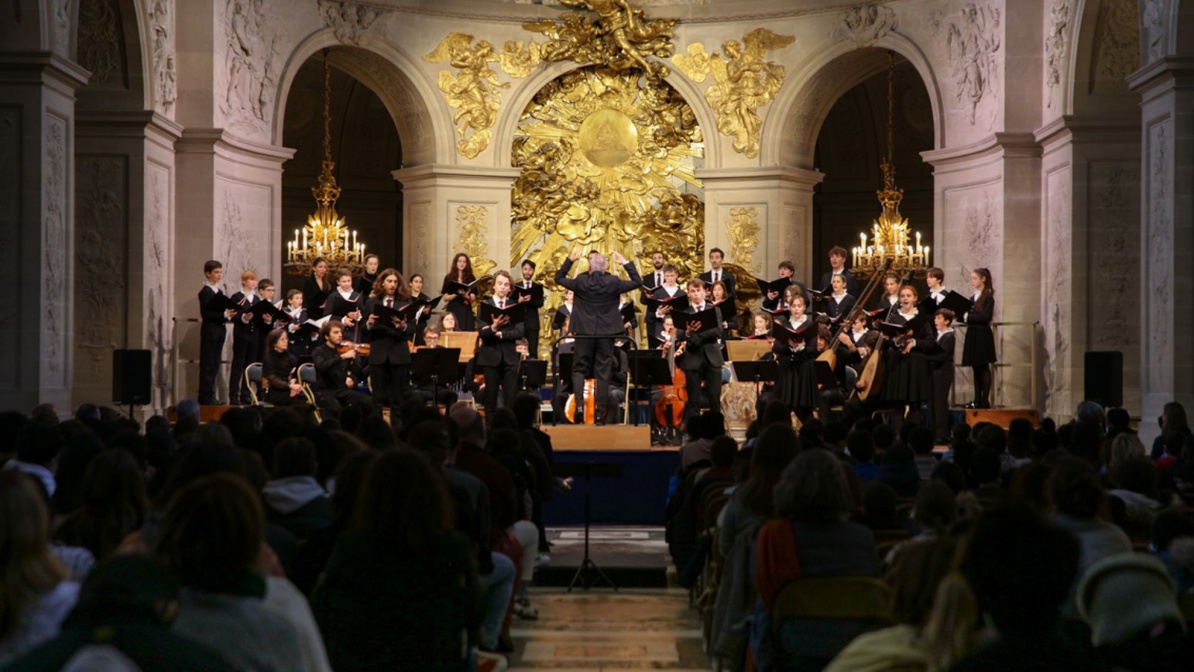
La Maîtrise du Centre de musique baroque de Versailles © Morgane Vie
Deux créations verront le jour en juin 2023 dans le cadre du festival ManiFeste de l’Ircam : les œuvres de la compositrice espagnole Ariadna Alsina Tarrés et du compositeur français Adrien Trybucki. En 2024, nous découvrirons les œuvres de la lituanienne Justina Repečkaitė et du serbe Jug Marković. Les quatre jeunes artistes ont tous été formés à l’électronique, puisqu’ils sont issus du Cursus de composition et d’informatique musicale de l’Ircam.
Ce partenariat inédit et ô combien novateur fera entendre, en regard de ces créations, des pièces baroques françaises des XVIIe et XVIIIe siècles, comme par un jeu de miroir entre histoire et création, passé et avenir.
Le programme des concerts
Dans le cadre du festival ManiFeste-2023
Jeudi 22 juin 2023, 20h | Ircam, Espace de projection
Fabien Armengaud et Clément Buonomo direction musicale
Les Pages et les Chantres du Centre de musique baroque de Versailles
Quentin Nivromont, Johann Philippe électronique Ircam
Créations des nouvelles œuvres de Adrien Trybucki et Ariadna Alsina Tarrés
Commandes de l’Ircam-Centre Pompidou et du CMBV
En regard des œuvres du répertoire baroque ayant inspiré les deux créations
Saison 2023-2024
Avril 2024 | Ircam, Espace de projection
Fabien Armengaud direction musicale
Les Pages et les Chantres du Centre de musique baroque de Versailles
Quentin Nivromont, Johann Philippe électronique Ircam
Créations des nouvelles œuvres de Jug Marković ou Justina Repečkaitė
Commandes de l’Ircam-Centre Pompidou et du CMBV
En regard des oeuvres du répertoire baroque ayant inspiré les deux créations
Dans le cadre du festival ManiFeste-2024 - Soirée de clôture du programme Janus
Juin 2024 | Chapelle royale du château de Versailles
Fabien Armengaud direction musicale
Les Pages et les Chantres du Centre de musique baroque de Versailles
Quentin Nivromont, Johann Philippe électronique Ircam
Interprétation de l’ensemble des quatre nouvelles œuvres du projet Janus : de Adrien Trybucki, Ariadna Alsina Tarrés, Jug Marković et Justina Repečkaitė
Les lieux des concerts : deux salles d'exception, chacune leur spécificité
L’Espace de projection de l’Ircam
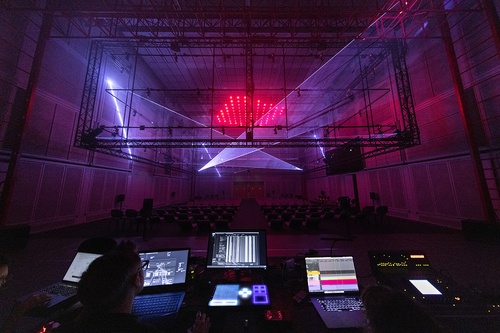 Lieu d’expérimentation acoustique et d’exploration musicale, l’Espace de projection est situé au cœur de l’Ircam dont il constitue le point culminant, totalement isolé dans un système architectural de boîtes en gigogne, à 16 mètres de profondeur sous la place Igor-Stravinsky à Paris. Construit par Renzo Piano et Richard Rogers avec l’acousticien Victor Peutz et inauguré en 1978, il se distingue par sa modularité et son acoustique variable : sa volumétrie (les plafonds s’abaissent en 3 panneaux distincts) tout comme les matériaux de ses parois (diffusant / absorbant / réfléchissant) peuvent changer à la demande.
Lieu d’expérimentation acoustique et d’exploration musicale, l’Espace de projection est situé au cœur de l’Ircam dont il constitue le point culminant, totalement isolé dans un système architectural de boîtes en gigogne, à 16 mètres de profondeur sous la place Igor-Stravinsky à Paris. Construit par Renzo Piano et Richard Rogers avec l’acousticien Victor Peutz et inauguré en 1978, il se distingue par sa modularité et son acoustique variable : sa volumétrie (les plafonds s’abaissent en 3 panneaux distincts) tout comme les matériaux de ses parois (diffusant / absorbant / réfléchissant) peuvent changer à la demande.
Il est également équipé d’un système de spatialisation sonore multicanal de 339 hautparleurs, combinant deux systèmes de pointe en matière de reproduction du champ sonore, la WFS (synthèse d’hologrammes sonores) et Ambisonics (immersion sonore 3D). Toutes les configurations scénographiques sont également permises, le rapport scène / salle étant modulable à l’infini.
La Chapelle royale du château de Versailles
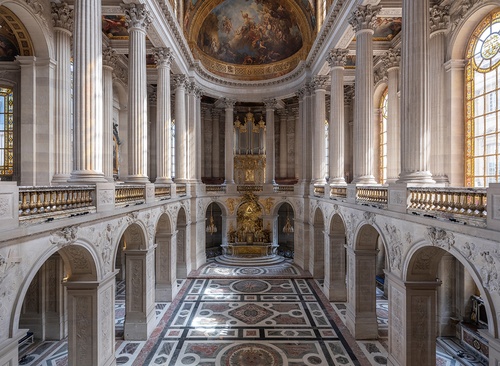 La Chapelle royale de Versailles, édifiée par Jules Hardouin-Mansart et Robert de Cotte en 1710, est le dernier chantier de grande ampleur mené sous le règne de Louis XIV. Avec la galerie des Glaces, il s’agit de l’aménagement le plus prestigieux et le plus audacieux apporté au Château par le Roi-Soleil. Le bâtiment marque une parfaite symbiose entre architecture et décor, conçus par les plus grands artistes de l’époque.
La Chapelle royale de Versailles, édifiée par Jules Hardouin-Mansart et Robert de Cotte en 1710, est le dernier chantier de grande ampleur mené sous le règne de Louis XIV. Avec la galerie des Glaces, il s’agit de l’aménagement le plus prestigieux et le plus audacieux apporté au Château par le Roi-Soleil. Le bâtiment marque une parfaite symbiose entre architecture et décor, conçus par les plus grands artistes de l’époque.
Conformément à la tradition des chapelles palatines, le bâtiment comporte deux étages. De la tribune principale, le Roi et la famille royale assistaient quotidiennement à la messe. Le reste de la cour se tenait au rez-de-chaussée, où le roi ne descendait que pour les grandes fêtes religieuses. Durant les offices, la musique était omniprésente ; au-dessus de l’autel, autour de l’orgue de Robert Clicquot dont les claviers ont été tenus par les plus grands maîtres comme François Couperin, la musique de la Chapelle, renommée dans toute l’Europe, chantait quotidiennement des motets tout au long des offices.
Photo : Chapelle royale du château de Versailles © Château de Versailles, photo : T. Garnier
Une reconstruction acoustique virtuelle de la Chapelle royale
Les concerts à l’Espace de projection de l’Ircam se feront dans l’acoustique reconstituée de la Chapelle royale du château de Versailles, grâce à un système d’empreinte acoustique mis au point par les chercheurs de l’Ircam.
Autour des concerts
Pour les publics : des ressources documentaires
À paraître en 2024-2025
- Edition d’une collection de CD Janus : publication des enregistrements des créations
- Diffusion d’un documentaire vidéo dans les coulisses du projet, au plus près des jeunes artistes
Un programme d’action culturelle
« Ville baroque », à Maurepas
Les équipes du CMBV et de l'Ircam proposent aux bénéficiaires du projet Ville baroque, projet d'action culturelle dans les Yvelines, une initiation aux processus de création et d'informatique musicale. Élèves en collège, centre sociaux culturels et habitants du territoire profiteront d'ateliers de pratique tout au long du programme.
Pour les artistes : un accompagnement pédagogique
Le programme des commandes passées aux jeunes compositeurs et compositrices pour la Maîtrise du CMBV a été conçu avec deux types d’actions pédagogiques complémentaires et intrinsèquement liées, destinés à l’ensemble des participant.e.s du programme Janus :
- Une masterclasse, destinée aux quatre compositeurs et compositrices, aux Pages et aux Chantres du CMBV en juin 2022, lors de l’académie du festival ManiFeste
Les réalisateurs en informatique musicale de l’Ircam ont présenté les technologies vocales développées à l’Ircam et les ont fait expérimenter aux jeunes chanteurs. Les Chantres et les Pages ont interprété des esquisses des 4 compositeurs et compositrices. Cette masterclasse fut ouverte à l’ensemble des stagiaires de l’académie du festival ManiFeste-2022 de l’Ircam. - Une série d’ateliers « compositeurs / interprètes », en 2022 et 2023
Ces ateliers permettent une approche commune et expérimentale entre les artistes retenus, les chefs de chœurs, les chanteurs, les enfants ainsi que des musiciens pratiquant sur instruments anciens. Ils ont pour objectif d’accompagner le travail de création des compositeurs et d’interprétation des jeunes chanteurs : découverte de l’univers musical de chaque compositeur, séances de répétitions, d’esquisses, apprentissage du chant avec électronique, des techniques vocales contemporaines, découverte des techniques de la musique baroque pour les compositeurs ...



 « Que serait la création musicale sans les siècles de musique qui la précèdent ? Que signifierait la conservation d’un répertoire, voire la restauration de ses pratiques d’interprétation si elles ne servent d’inspiration vers d’autres rivages ? Que sont nos lieux de représentation musicale s’ils n’offrent pas une part d’inattendu ? Janus, le Dieu romain aux deux visages, qui, du seuil de la maison, regarde le passé et le futur, donne son nom à ce programme commun – et hors norme – de l’Ircam et du
« Que serait la création musicale sans les siècles de musique qui la précèdent ? Que signifierait la conservation d’un répertoire, voire la restauration de ses pratiques d’interprétation si elles ne servent d’inspiration vers d’autres rivages ? Que sont nos lieux de représentation musicale s’ils n’offrent pas une part d’inattendu ? Janus, le Dieu romain aux deux visages, qui, du seuil de la maison, regarde le passé et le futur, donne son nom à ce programme commun – et hors norme – de l’Ircam et du 
 Lieu d’expérimentation acoustique et d’exploration musicale,
Lieu d’expérimentation acoustique et d’exploration musicale,  La
La 